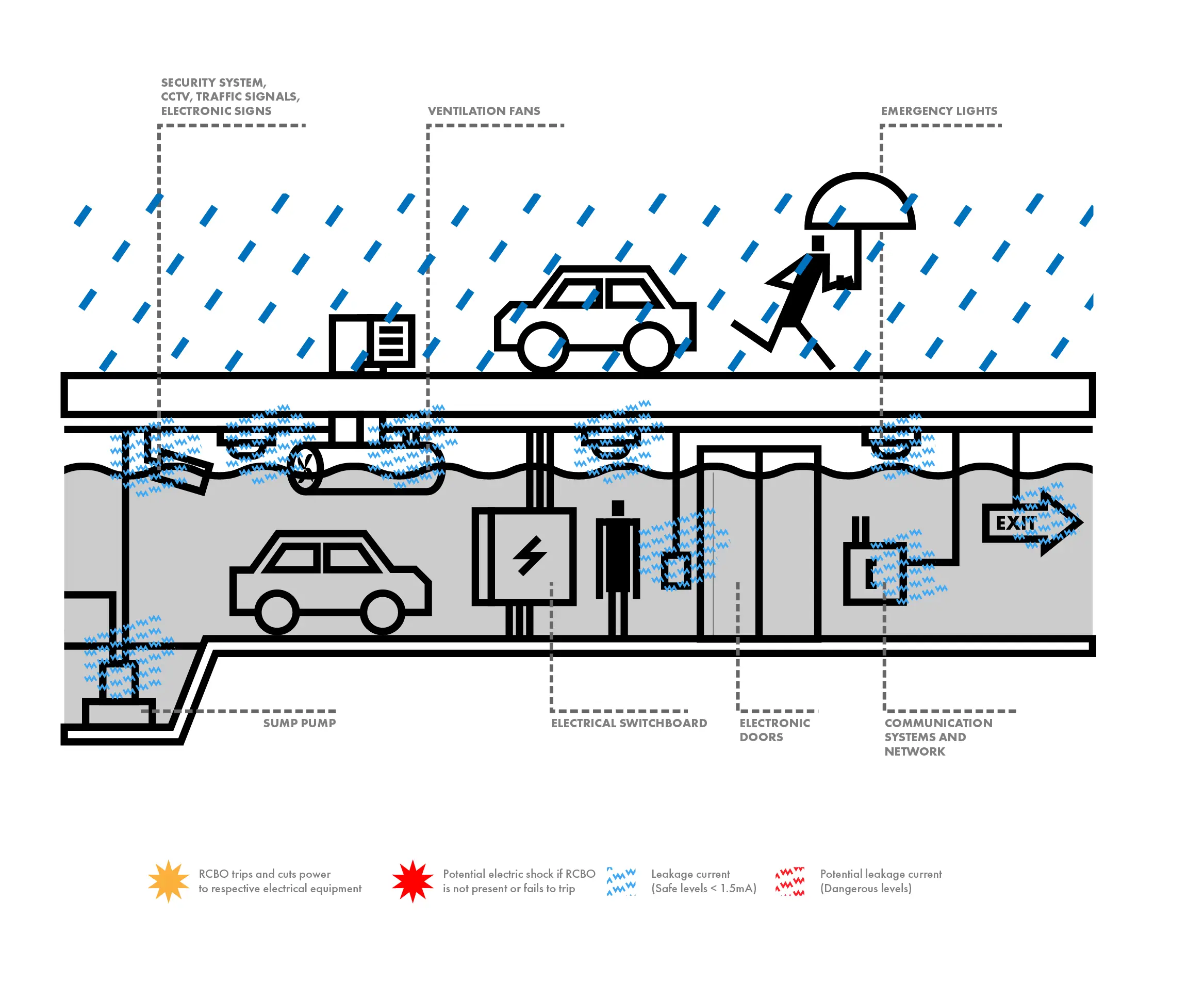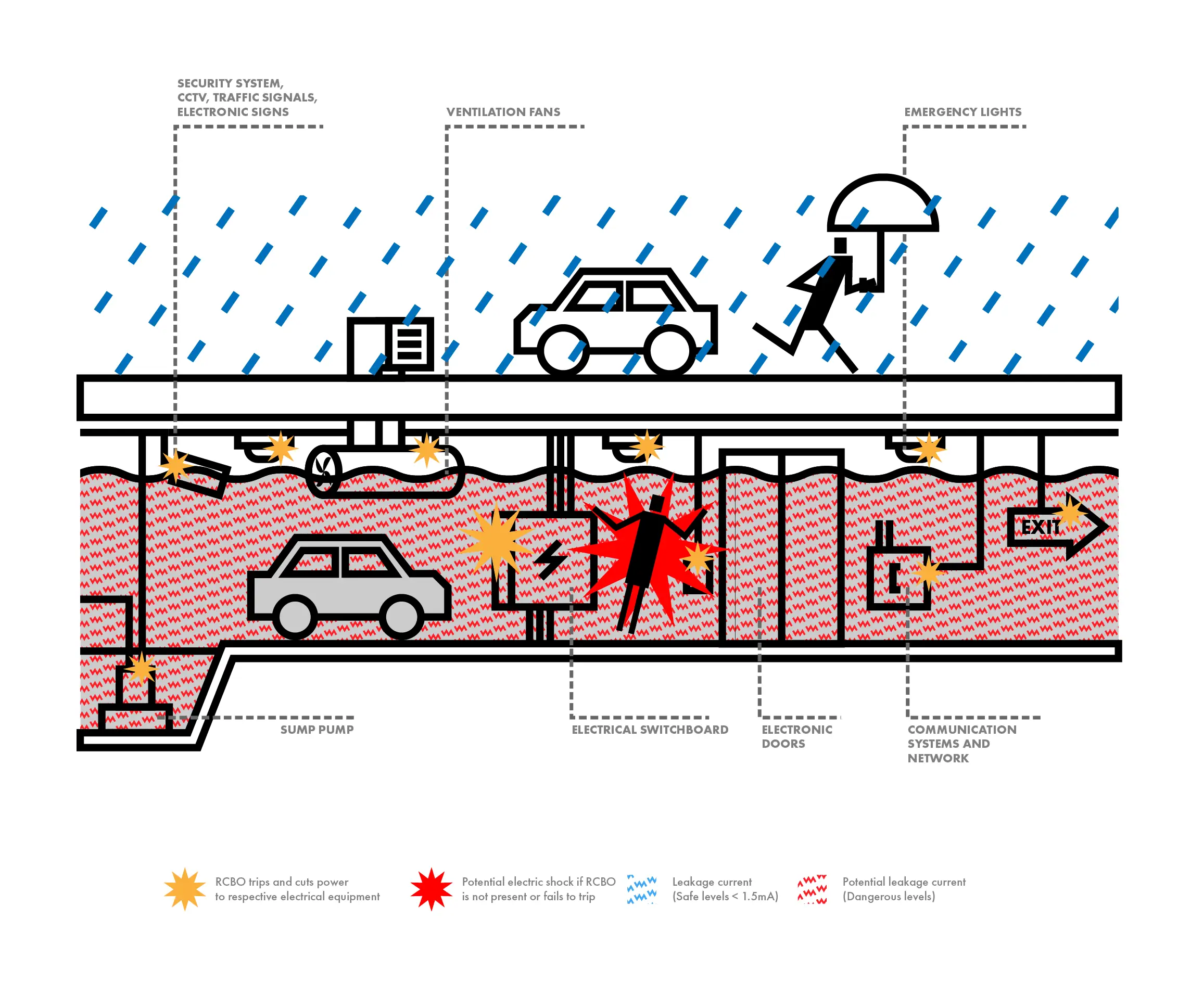However, the shutting down of critical assets, such as the sump pump, traffic systems, emergency lighting, ventilation system could result in other catastrophic events. For example, if the sump pumps stop, the water level will rise quicker, resulting in cascading electrical failures, resulting in people potentially being trapped inside the underground system with increase risk of drowning.
Recently, with unusual downpours across the world, there have been situations where downpours have resulted in flooding resulting in the loss of human life in underground carparks, metros and tunnels across the world.
ELP have designed products to counter these unwanted hazards. If all relevant critical electrical infrastructure inside the underground tunnel is fitted with ELP’s eLynX range of products, it will continue to operate normally without compromising functionality and personnel safety.
It does this by limiting the leakage current to safe levels (<1.5mA) which allows the residual current device to remain closed. In addition, it is fitted with ability to send alarms remotely. When there is any level of leakage current, it will trigger an output signal to raise the alarm.
This will forewarn operators and asset owners of the potential electrical hazard, while allowing the asset to operate safely.
For more information about ELP’s Core Technology, Click here.
For more information about ELP’s eLynX range of products, Click here.

